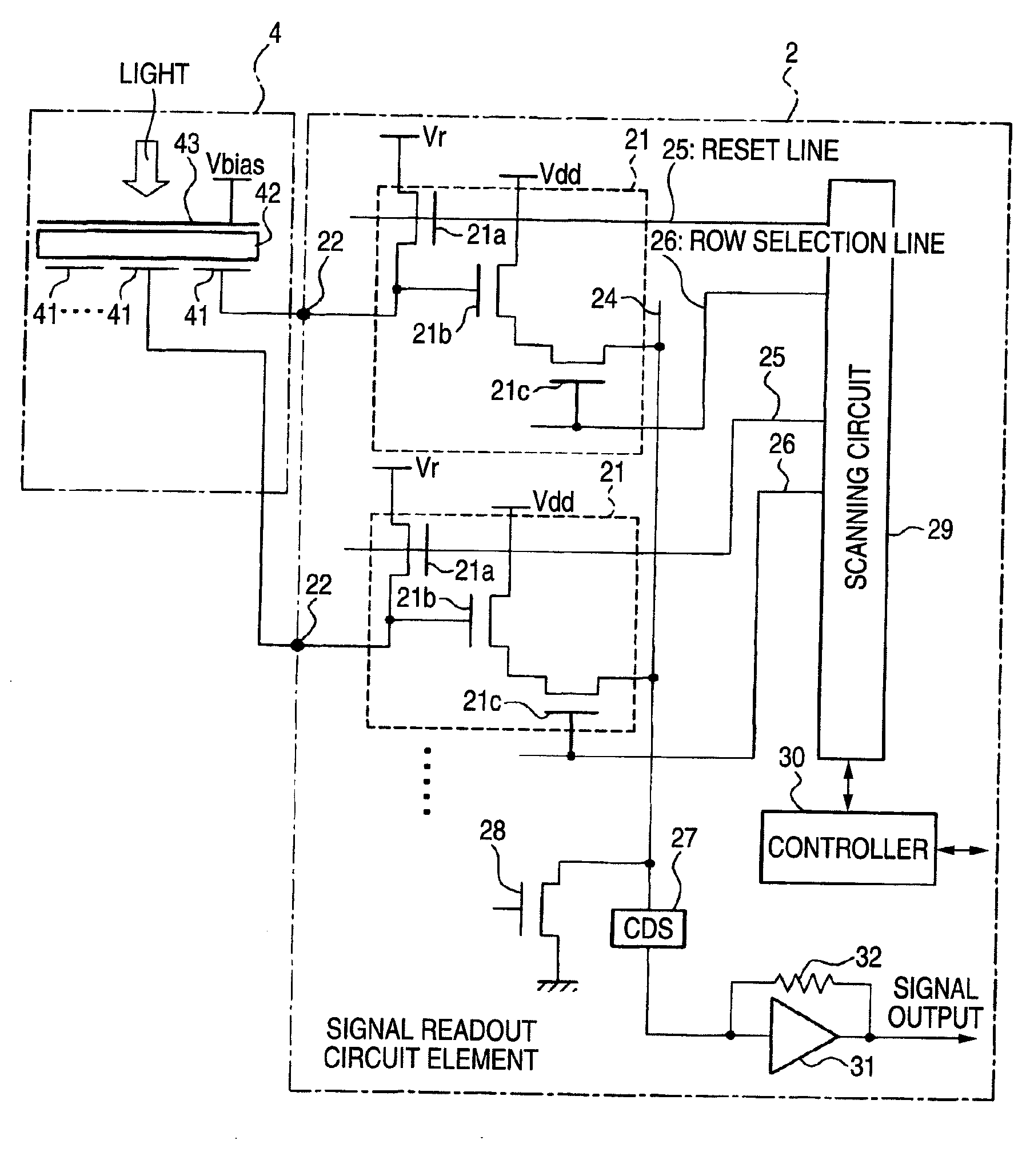Solid-state imaging device, imaging apparatus, and method for manufacturing solid-state imaging device
a solid-state imaging and imaging device technology, applied in the field of solid-state imaging devices, imaging apparatus, and manufacturing solid-state imaging devices, can solve the problems of generating streaky fixed pattern noise in scanned images, a-si is not suitable for high-sensitivity image sensors, and it is not possible to manufacture sensors having the diameter of silicon wafers. large, high-speed reading
- Summary
- Abstract
- Description
- Claims
- Application Information
AI Technical Summary
Benefits of technology
Problems solved by technology
Method used
Image
Examples
first embodiment
[0059]FIG. 1 is a cross-sectional view showing the schematic configuration of a solid-state imaging device according to a first exemplary embodiment of the invention. FIG. 2 is a circuit diagram showing the detailed configuration of a signal readout circuit element 2 shown in FIG. 1. FIG. 3 is a mimetic diagram showing the entire configuration of the solid-state imaging device shown in FIG. 1.
[0060]The solid-state imaging device 100 shown in FIG. 1 includes a circuit board 1, a plurality of signal readout circuit elements 2 arranged in a one-dimensional manner on the circuit board 1 as shown in FIG. 3, and a photoelectric conversion section 4 formed on the plurality of signal readout circuit elements 2.
[0061]The photoelectric conversion section 4 includes a plurality of pixel electrodes 41 arrayed in a one-dimensional manner, a photoelectric conversion layer 42 which has a one-sheet configuration and is formed on the plurality of pixel electrodes 41, a opposite electrode 43 which ha...
second embodiment
[0093]In a solid-state imaging device described in a second exemplary embodiment, the array of the signal readout circuit elements 2 of the solid-state imaging device 100 described in the first embodiment is changed from the one-dimensional shape to the two-dimensional shape, the array of photoelectric conversion elements corresponding to the respective signal readout circuit element 2 is changed from the one-dimensional shape to the two-dimensional shape, and the configuration of each signal readout circuit element 2 and the configuration of the circuit board 1 change with the changes.
[0094]FIG. 5 is a schematic view showing the entire configuration of a solid-state imaging device 200 according to a second embodiment of the invention. FIG. 6 is a plan view schematically showing the solid-state imaging device 200 according to the second embodiment of the invention. FIG. 7 is a circuit diagram showing the detailed configuration of a signal readout circuit element 2 shown in FIG. 6. T...
PUM
 Login to View More
Login to View More Abstract
Description
Claims
Application Information
 Login to View More
Login to View More - R&D
- Intellectual Property
- Life Sciences
- Materials
- Tech Scout
- Unparalleled Data Quality
- Higher Quality Content
- 60% Fewer Hallucinations
Browse by: Latest US Patents, China's latest patents, Technical Efficacy Thesaurus, Application Domain, Technology Topic, Popular Technical Reports.
© 2025 PatSnap. All rights reserved.Legal|Privacy policy|Modern Slavery Act Transparency Statement|Sitemap|About US| Contact US: help@patsnap.com



